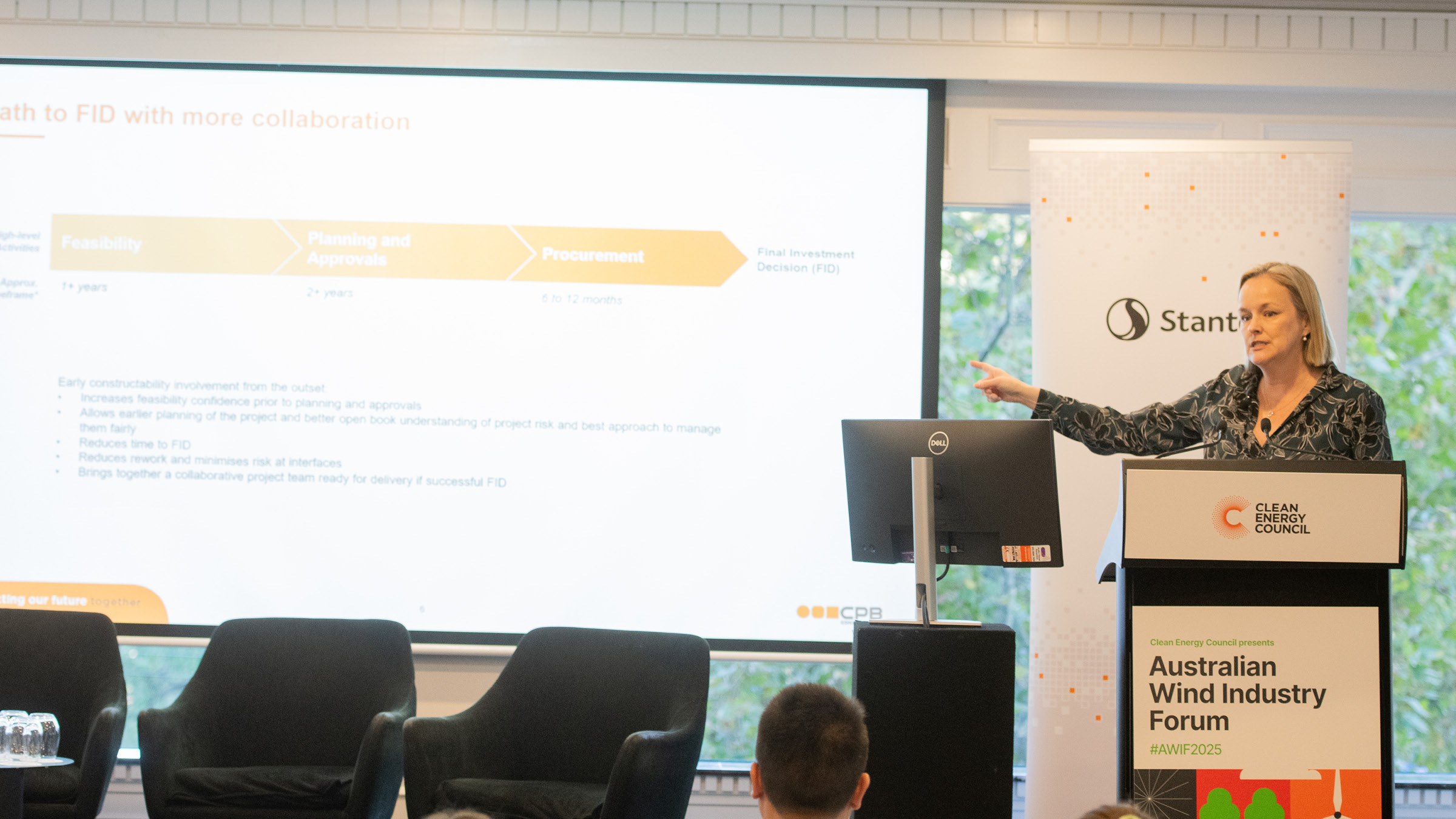Navigating optimal contract models: competition, collaboration, and innovation
In the complex and dynamic field of project planning and management, especially within the construction and energy sectors, selecting the optimal contract model is a crucial task.
Choosing the appropriate contracting model for each project’s unique characteristics is the foundation of project success. It can help to ensure cost and schedule certainty and reduce the risk of delays or changes during delivery, avoiding cost overruns and inefficiencies.
CPB Contractor’s General Manager of Engineering, Benita Husband, was invited to explore critical considerations in identifying an optimal contract model, focusing on the balance between competition and collaboration, at the recent Australian Wind Industry Forum in Melbourne.
Collaboration is foundational
There are many well established contract models in the market. Those that incorporate elements of both competition and collaboration during their implementation and delivery - positioning collaboration a foundational aspect rather than an afterthought - help to drive cost efficiency and innovation.
Collaboration is especially important when a project has unusual, complex or unique requirements that can be managed by maturing the design before pricing. A collaborative approach enhances the feasibility of a project, providing greater certainty of project duration and costs than a traditional lump sum design and construct model by advancing the design to, or near to, completion before fixing costs. This results in the best long-term outcome for efficient design, logistics management, constructability and cost-effective project delivery.
Timing collaboration and competition
In the energy sector, engaging stakeholders early can significantly impact the optimisation of project elements such as environmental approvals, wind turbine generator placements, where civil and energy considerations must be synergistic rather than conflicting, and key planning considerations including assessing access roads and supply chain challenges. Early engagement is key to collaborative approaches, and helps to ensure that planning and design are fit for purpose, meet community expectations and align with statutory and regulatory requirements.
To fully leverage these benefits, the timing of collaboration and competition is important. During the competitive phase, bidders need equitable conditions with clear, shared criteria and to be held accountable for non-binding bids, particularly in the early works or early contractor involvement phase.
Embracing a "One Team" mentality
Post-competition, a transition to a "One Team" approach is crucial.
Once a contractor is selected, having all stakeholders unite towards a common goal — reaching the final investment decision — enables a more flexible and adaptive approach to working together to solve challenges. Alignment encourages all team members to work collaboratively towards the project's success, achieving the best overall outcome while delivering transparent pricing and managing uncertainties effectively.
An informed understanding of project risks is also achieved, so they can be best allocated and provisioned for, leading to better certainty for the project owner and reducing windfall gains or unsustainable losses.
Digital solutions and innovation
Innovation remains a linchpin in modern contract delivery. Techniques such as precast foundations can revolutionise project timelines and reduce costs. By exploring new materials, construction methods, and technologies, teams can vastly improve project outcomes and sustainability. Collaborating early in the design process increases opportunities for innovative methods of construction. Collaborative approaches enable greater innovation by avoiding reliance on fixed price solutions which push contractors to minimise risk by relying only on established – but potentially dated – approaches.
The integration of digital solutions is another critical factor. Utilising advanced technologies such as building information modelling can streamline project planning and execution. These tools not only boost efficiency but can also enhance the accuracy and precision of designs, thus preventing costly mistakes and delays.
Expertise and lessons learnt
Structuring the optimal contract model requires equitable competition, a "One Team" approach to collaboration, and a commitment to innovation and digital tools. Partnering in the early stages helps to advance the design and identify and appropriately address project risks, then (when design reaches a level of maturity) the owner and contractor can approach the cost of work on an open-book basis. This means increased certainty of cost and schedule, early start opportunities and advancing approvals jointly, reducing the risk of delays/changes during delivery.
Each project is unique and choosing the appropriate contracting model is essential to ensure a project's success. More information on contracting models can be found here: construction-contracting-models

